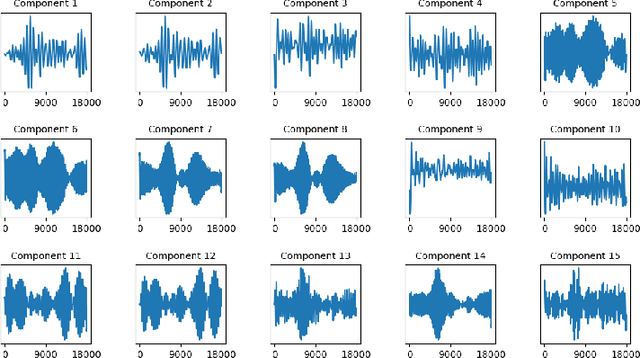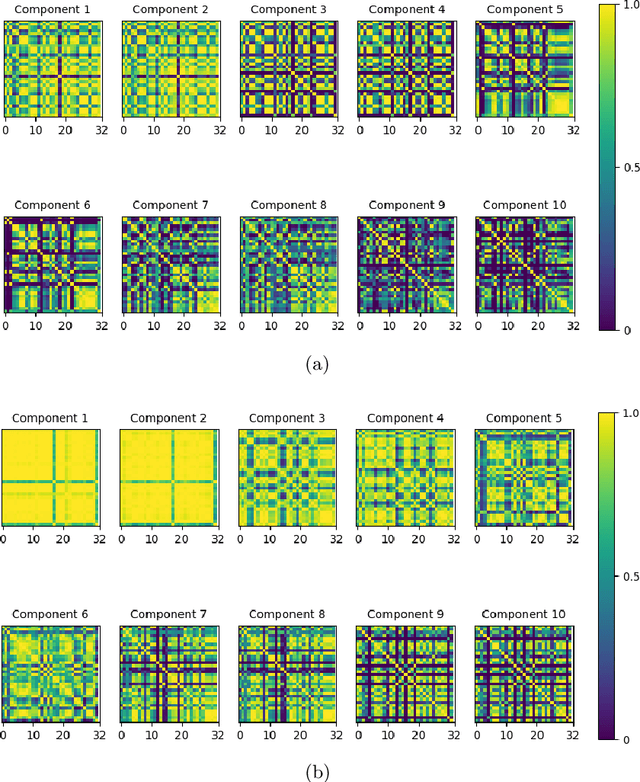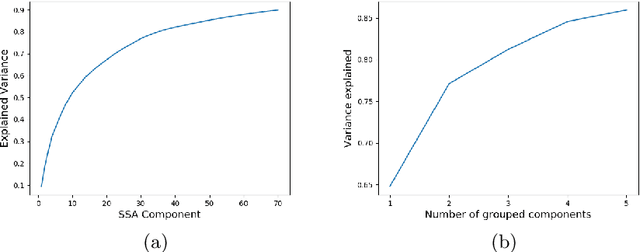Juan Luis Luque
EEG Connectivity Analysis Using Denoising Autoencoders for the Detection of Dyslexia
Nov 23, 2023Abstract:The Temporal Sampling Framework (TSF) theorizes that the characteristic phonological difficulties of dyslexia are caused by an atypical oscillatory sampling at one or more temporal rates. The LEEDUCA study conducted a series of Electroencephalography (EEG) experiments on children listening to amplitude modulated (AM) noise with slow-rythmic prosodic (0.5-1 Hz), syllabic (4-8 Hz) or the phoneme (12-40 Hz) rates, aimed at detecting differences in perception of oscillatory sampling that could be associated with dyslexia. The purpose of this work is to check whether these differences exist and how they are related to children's performance in different language and cognitive tasks commonly used to detect dyslexia. To this purpose, temporal and spectral inter-channel EEG connectivity was estimated, and a denoising autoencoder (DAE) was trained to learn a low-dimensional representation of the connectivity matrices. This representation was studied via correlation and classification analysis, which revealed ability in detecting dyslexic subjects with an accuracy higher than 0.8, and balanced accuracy around 0.7. Some features of the DAE representation were significantly correlated ($p<0.005$) with children's performance in language and cognitive tasks of the phonological hypothesis category such as phonological awareness and rapid symbolic naming, as well as reading efficiency and reading comprehension. Finally, a deeper analysis of the adjacency matrix revealed a reduced bilateral connection between electrodes of the temporal lobe (roughly the primary auditory cortex) in DD subjects, as well as an increased connectivity of the F7 electrode, placed roughly on Broca's area. These results pave the way for a complementary assessment of dyslexia using more objective methodologies such as EEG.
* 19 pages, 6 figures
Dyslexia detection from EEG signals using SSA component correlation and Convolutional Neural Networks
Oct 26, 2020



Abstract:Objective dyslexia diagnosis is not a straighforward task since it is traditionally performed by means of the intepretation of different behavioural tests. Moreover, these tests are only applicable to readers. This way, early diagnosis requires the use of specific tasks not only related to reading. Thus, the use of Electroencephalography (EEG) constitutes an alternative for an objective and early diagnosis that can be used with pre-readers. In this way, the extraction of relevant features in EEG signals results crucial for classification. However, the identification of the most relevant features is not straighforward, and predefined statistics in the time or frequency domain are not always discriminant enough. On the other hand, classical processing of EEG signals based on extracting EEG bands frequency descriptors, usually make some assumptions on the raw signals that could cause indormation loosing. In this work we propose an alternative for analysis in the frequency domain based on Singluar Spectrum Analysis (SSA) to split the raw signal into components representing different oscillatory modes. Moreover, correlation matrices obtained for each component among EEG channels are classfied using a Convolutional Neural network.
 Add to Chrome
Add to Chrome Add to Firefox
Add to Firefox Add to Edge
Add to Edge